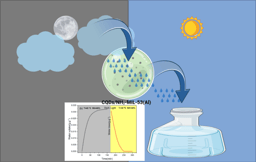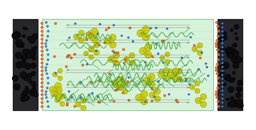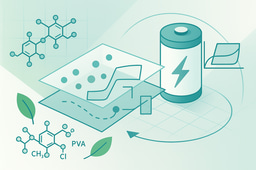Acid-free synthesis of MIL-101(Cr) for enhanced photocatalytic reduction of atmospheric CO 2 to methanol in aqueous media using a household light source and TEA as an electron donor source
Published in Materials

Explore the Research
Failed
Failed to retrieve the data.
Photocatalytic CO₂ reduction is gaining traction as a dual solution for carbon mitigation and green fuel generation. In this article, Aziz and Hassan report an acid-free route to MIL-101(Cr) and demonstrate visible-light CO₂ conversion to methanol in aqueous media using a household light source and triethanolamine (TEA) as an electron donor. The MOF exhibits uniform nanocrystallinity, high porosity (average pore diameter ~9.2 Å) and large surface area (~1650 m² g⁻¹), supporting competitive methanol productivities (≈62 mmol h⁻¹ g⁻¹ at 100 µL TEA) and underscoring the promise of safer, scalable MOF synthesis for solar-fuel chemistry.
Highlights of our study
-
Benign synthesis & structure: An acid-free hydrothermal route yields MIL-101(Cr) with high crystallinity and well-defined meso/microporosity, confirmed by XRD, FESEM/EDX/mapping, BET, and TGA.
-
Visible-light activity in water: Under a 300 W household bulb, MIL-101(Cr) drives CO₂-to-CH₃OH in aqueous phase; TEA markedly enhances rates by serving as a sacrificial hole scavenger.
-
Mechanistic picture: UV–DRS suggests LMCT-assisted photoexcitation; Cr³⁺ nodes act as Lewis-acid sites for CO₂ activation, enabling multielectron PCET steps to methanol.
-
Practicality & stability: The MOF retains structural integrity under reaction conditions, highlighting hydrothermal robustness and the feasibility of simple light/reactor setups for lab-scale CO₂ valorization.
Why it matters
MOFs offer tailorable porosity and redox-active nodes, but hazardous mineralizers and stability concerns have slowed translation. This work shows that safer synthesis can deliver visible-light–active, water-compatible MIL-101(Cr) with competitive CO₂-to-methanol performance, pointing toward accessible platforms for carbon-neutral fuel chemistry.
Authors & Affiliations
Dara M. Aziz*, Sangar A. Hassan — Department of Chemistry, College of Science, University of Raparin, Ranya 46012, Kurdistan Region, Iraq. (Corresponding author: darachem@uor.edu.krd)
Keywords: MIL-101(Cr); metal–organic frameworks; photocatalysis; CO₂ reduction; methanol; green synthesis



Please sign in or register for FREE
If you are a registered user on Research Communities by Springer Nature, please sign in